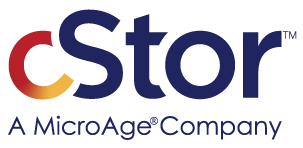How to Get Your IT Infrastructure and Security Teams Rowing in the Same Direction
By Pete Schmitt, CTO, cStor

The sport of rowing takes strong leadership, teamwork and coordination. No matter how hard you row, if the people in the boat are not rowing in sync, they will either be at a standstill or rowing in the wrong direction. Even worse, your team may end up spinning in circles.
Just like rowing, successful IT leadership requires the same principles. If your teams are not “rowing” together toward the same goal, you’ll be struggling to get your team over the finish line.
Often we see this struggle occurring within the Security and IT Infrastructure teams. Typically, these teams’ initiatives don’t line up with each other, which is why it’s important to get both teams in sync.
Since cStor focuses on infrastructure (on-premise and cloud) solutions with a specialization in security, we are in a unique position to see how those areas not only intersect but also combine to create a robust team that rows in harmony. Here are a few tips we’ve found that will help get your Infrastructure and Security teams gliding smoothly towards the finish line.
Appoint a Strong Captain
Just as in rowing, you need a strong person in charge – a captain – to navigate and guide your teams. Whether this is the CIO, CTO, CSO, or another IT leader in the company, this executive is critical in setting the tone for the Infrastructure and Security teams to work with the singular goal of driving the company forward in achieving its goals. Leaders within IT Operations (ITOps) and Security Operations (SecOps) must look for opportunities to bring together their teams to work on key goals within the company where both bring important value. The key is fostering a collaborative environment where conflicting priorities are communicated openly. Through careful planning, communication and teamwork, these conflicts can be worked through to create a unified solution.
“Rowing harder doesn’t help if the boat is headed in the wrong direction.”
– Kenichi Ohmae
Architect Securely
IT infrastructure teams are charged with ensuring the most efficient and cost-effective way to deliver and maintain all the services and components that keep the IT environment operating smoothly. Traditionally, many infrastructure teams viewed their goals of “efficient” and “cost-effective” to be in conflict with the Security team’s goals, believing their technology or methods would slow their services or add unnecessary cost. However, cybersecurity technology and services have come a long way. New solutions work seamlessly and cost-effectively, providing critical support in protecting the infrastructure and ensuring business continuity. The key is to help Infrastructure teams architect with Security in mind.
Secure with Architecture In Mind
On the other hand, security teams are focused on risk assessment as well as preventing, detecting and remediating cyberattacks and other security risks. Cybersecurity is a critical component of any IT solution with the nature of today’s constant, increasing attacks. However, as mentioned, others can view SecOps as creating bottlenecks or preventing the teams from doing things the way they want. The core goal of modern Security teams should not only be protecting the business from risk but also helping the company drive growth. This mindset helps enable other teams within the business and shifts the image of SecOps to being a collaborative partner. In this partnership, the Security team brings an infrastructure-friendly mindset to security.
Synchronize Your Efforts
 There is no longer a reason for the Security and Infrastructure teams to be at odds with each other. Instead, the key is to bring these teams together with a like-minded vision of creating value for the business.
There is no longer a reason for the Security and Infrastructure teams to be at odds with each other. Instead, the key is to bring these teams together with a like-minded vision of creating value for the business.
For example, in today’s environment with constantly evolving threats, every facet of IT is focused on preventing breaches and maintaining compliance. This is a key area where Infrastructure and Security teams can work together to ensure the continuity of IT services across the organization.
If you haven’t already done so, one of the best areas to start is by bringing the Infrastructure and Security teams together to create a Cybersecurity Framework. This framework is a critical step in securing the organization, bringing together cross-functional teams to protect the company’s infrastructure. Thus, it unites the SecOps and ITOps teams in a common, high-value goal.
cStor is in a unique position to help you bring together your cross-functional teams with infrastructure services that are security-specific. For example, one of our ManageWise On-Demand IT service offerings helps you develop your NIST security framework. If you would like more information on this service or our other related offerings, please reach out to us – we are happy to help!
Working together as partners within the organization, IT Infrastructure and Security teams can become critical drivers of keeping the business running reliably, securely and efficiently. If you keep these few pointers in mind, you’ll have your teams rowing in the same direction towards achieving your organization’s goals in a more stable, secure and efficient environment.








